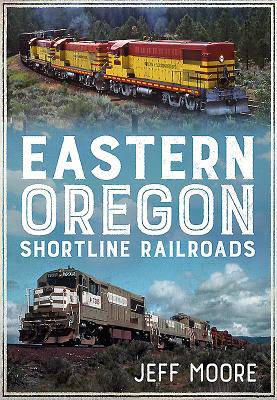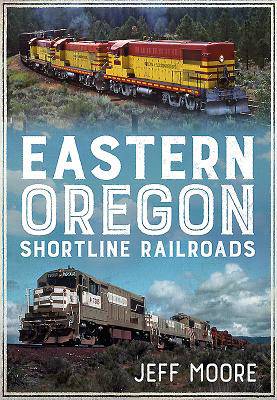
- Afhalen na 1 uur in een winkel met voorraad
- Gratis thuislevering in België vanaf € 30
- Ruim aanbod met 7 miljoen producten
- Afhalen na 1 uur in een winkel met voorraad
- Gratis thuislevering in België vanaf € 30
- Ruim aanbod met 7 miljoen producten
Omschrijving
Most of Oregon east of the Cascade Mountains is a raw and inhospitable land, largely the product of recent volcanic activity.
Railroad builders constructed a couple mainlines skirting the edges of the region and some branch lines into agricultural communities, but found very little else to attract their interest.
Over time, however, a small collection of interesting shortline railroads built or bought rail lines, either in conjunction with the developing timber industry in the Blue, Ochoco, and Wallowa mountains or to connect a few existing communities with the mainline that bypassed the town.
This book tells the stories of these small railroads and the roles they played in the development and economies of the region; covered railroads includes the Big Creek & Telocaset; City of Prineville; Condon, Kinzua & Southern; Idaho, Northern & Pacific; Klamath Northern; Oregon & Northwestern; Oregon, California & Eastern; Oregon Eastern Division of the Wyoming/Colorado; Sumpter Valley; Union Railroad of Oregon; Wallowa Union; and others.
Railroad builders constructed a couple mainlines skirting the edges of the region and some branch lines into agricultural communities, but found very little else to attract their interest.
Over time, however, a small collection of interesting shortline railroads built or bought rail lines, either in conjunction with the developing timber industry in the Blue, Ochoco, and Wallowa mountains or to connect a few existing communities with the mainline that bypassed the town.
This book tells the stories of these small railroads and the roles they played in the development and economies of the region; covered railroads includes the Big Creek & Telocaset; City of Prineville; Condon, Kinzua & Southern; Idaho, Northern & Pacific; Klamath Northern; Oregon & Northwestern; Oregon, California & Eastern; Oregon Eastern Division of the Wyoming/Colorado; Sumpter Valley; Union Railroad of Oregon; Wallowa Union; and others.
Specificaties
Betrokkenen
- Auteur(s):
- Uitgeverij:
Inhoud
- Aantal bladzijden:
- 176
- Taal:
- Engels
Eigenschappen
- Productcode (EAN):
- 9781634990103
- Verschijningsdatum:
- 3/10/2016
- Uitvoering:
- Paperback
- Formaat:
- Trade paperback (VS)
- Afmetingen:
- 170 mm x 246 mm
- Gewicht:
- 453 g

Alleen bij Standaard Boekhandel
+ 91 punten op je klantenkaart van Standaard Boekhandel
Beoordelingen
We publiceren alleen reviews die voldoen aan de voorwaarden voor reviews. Bekijk onze voorwaarden voor reviews.









